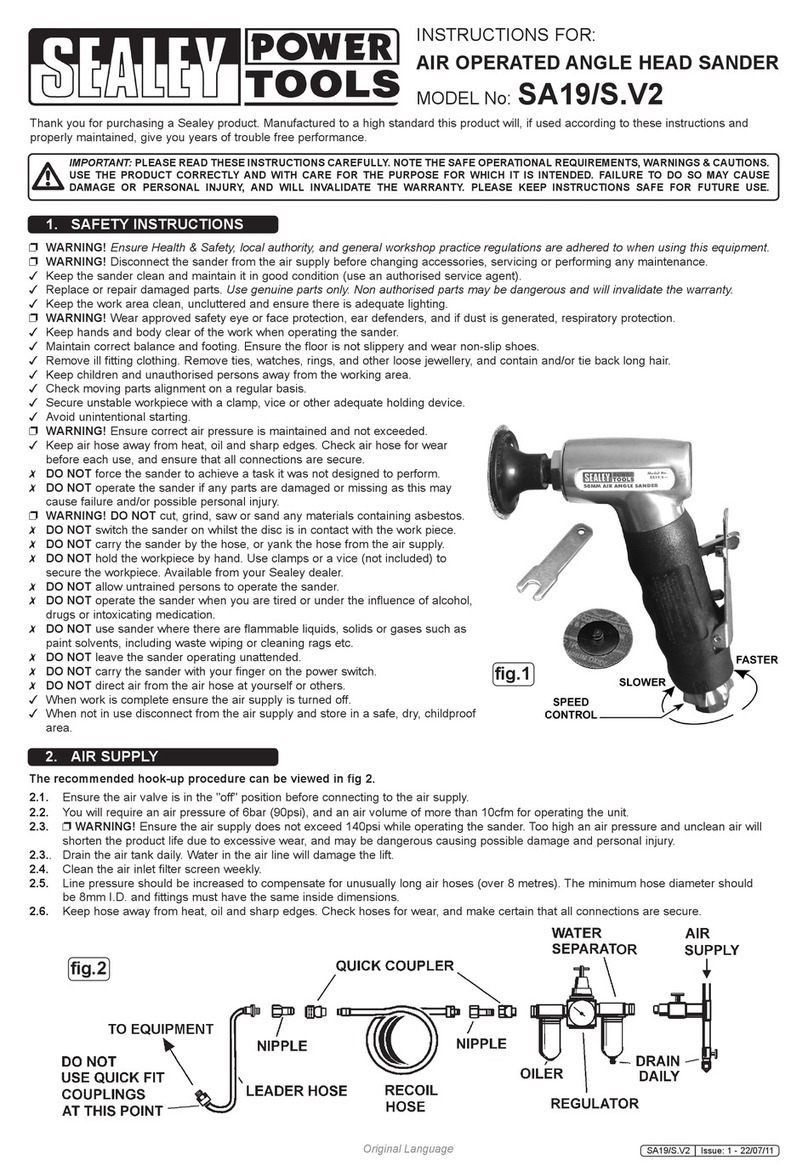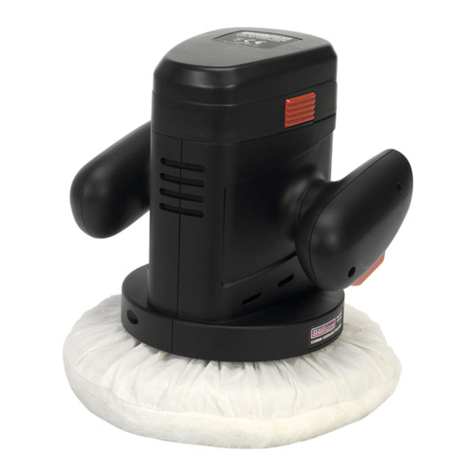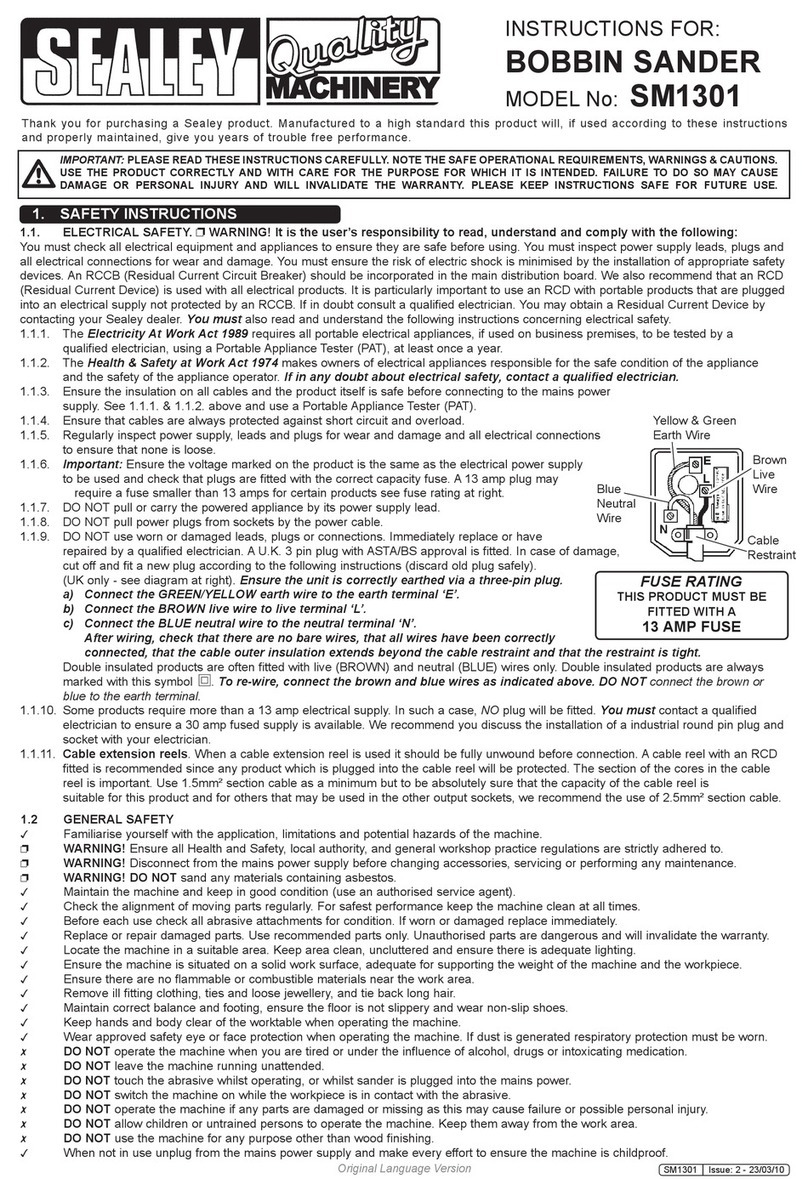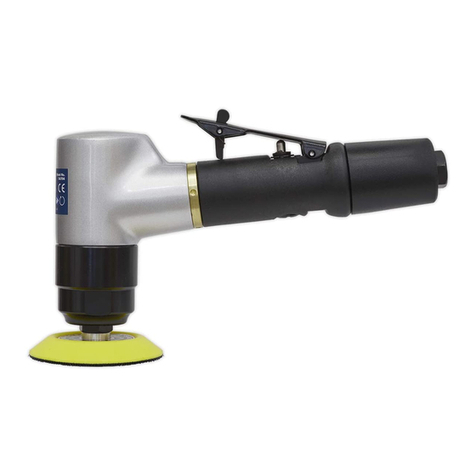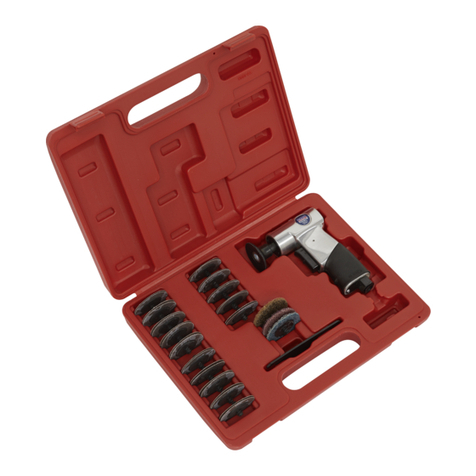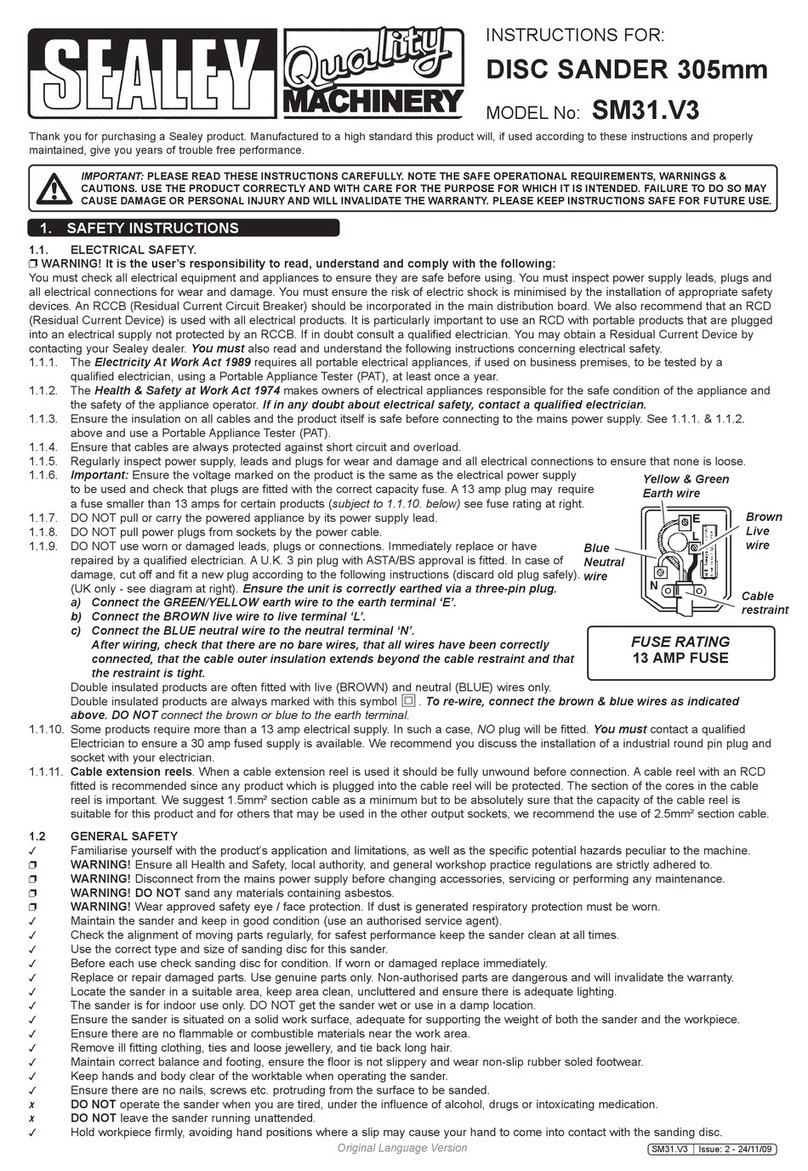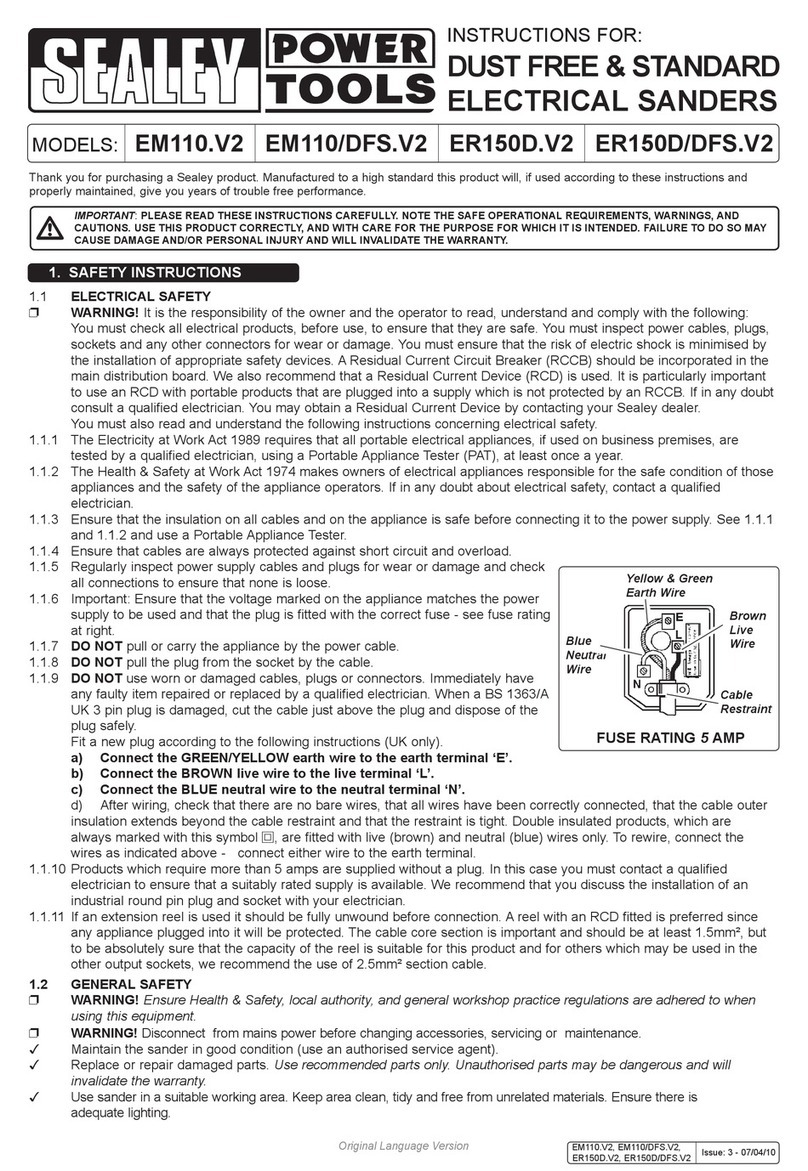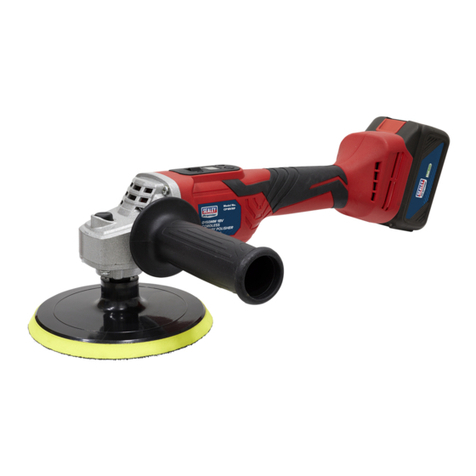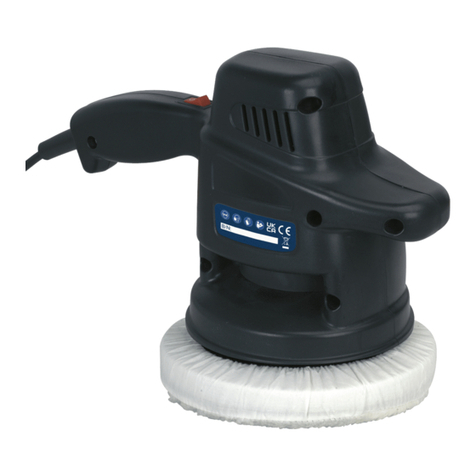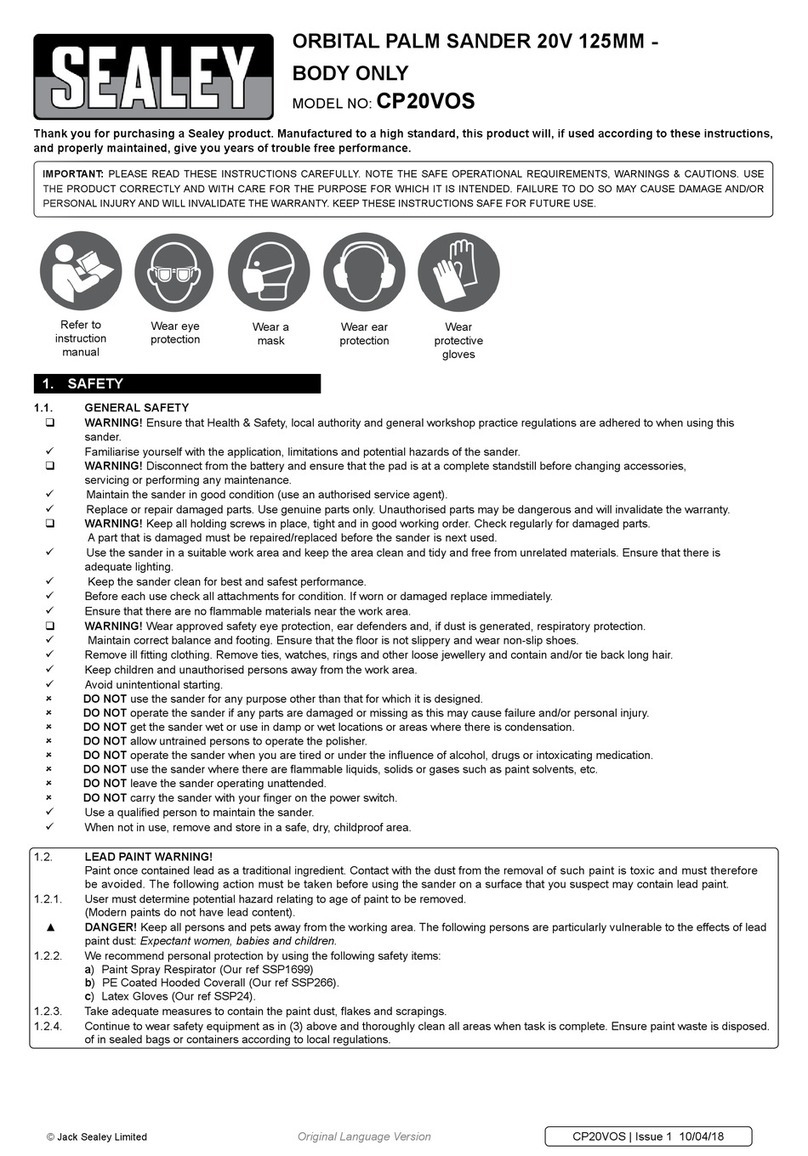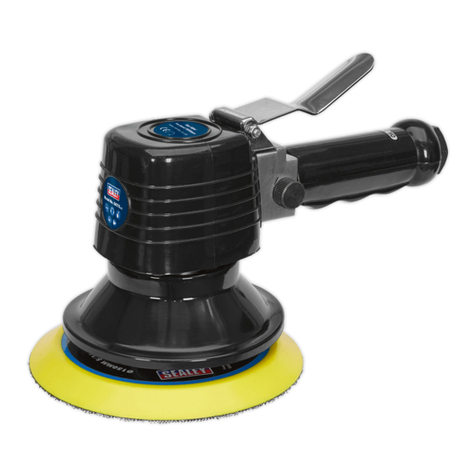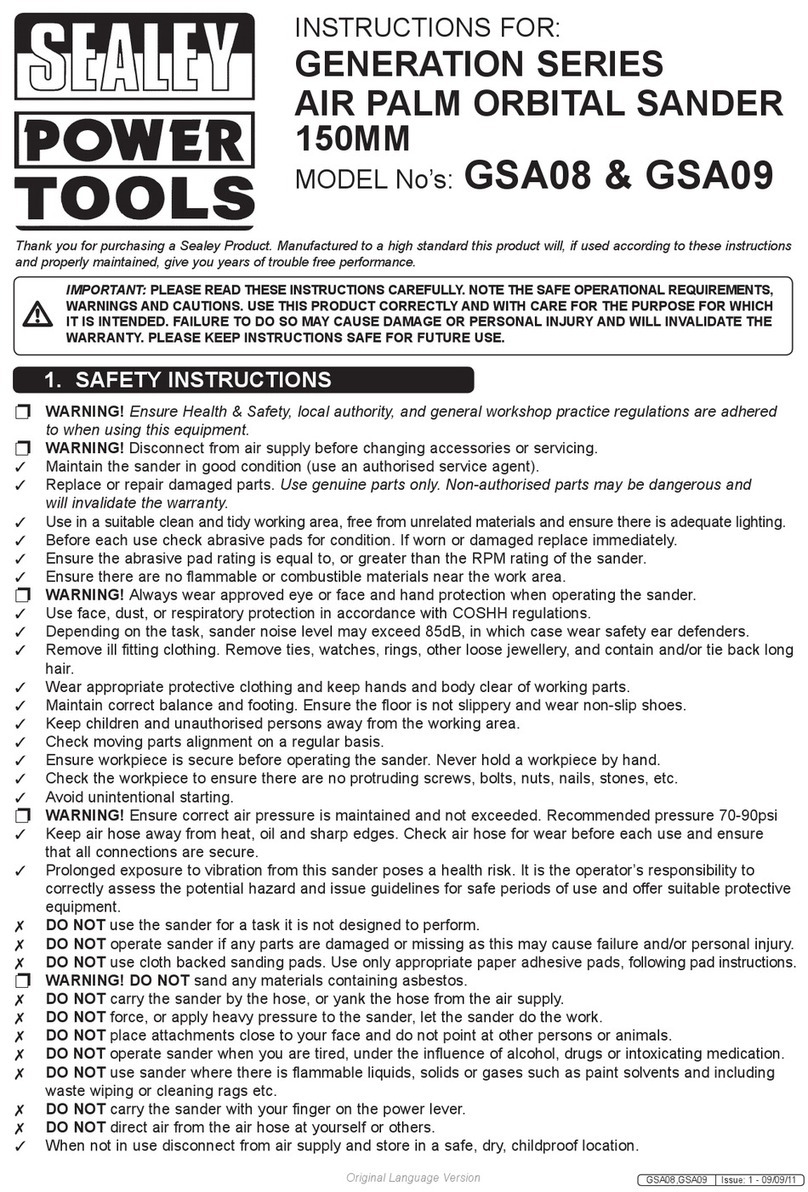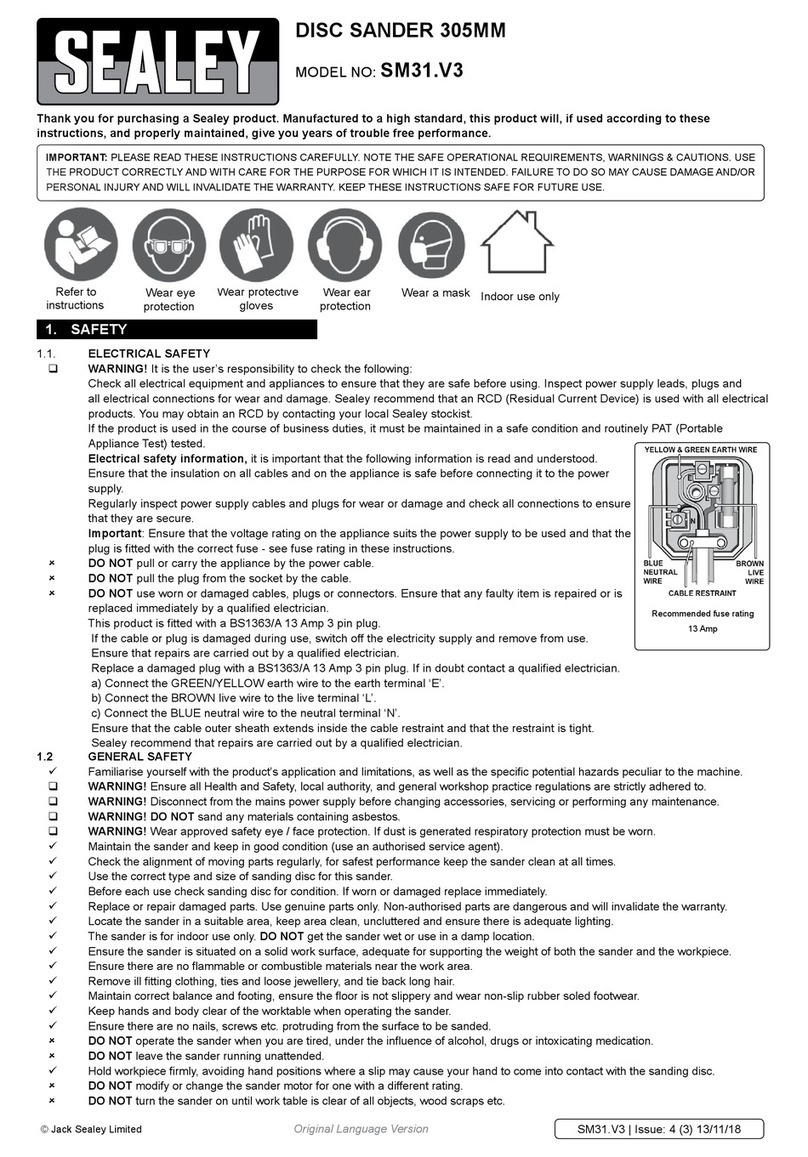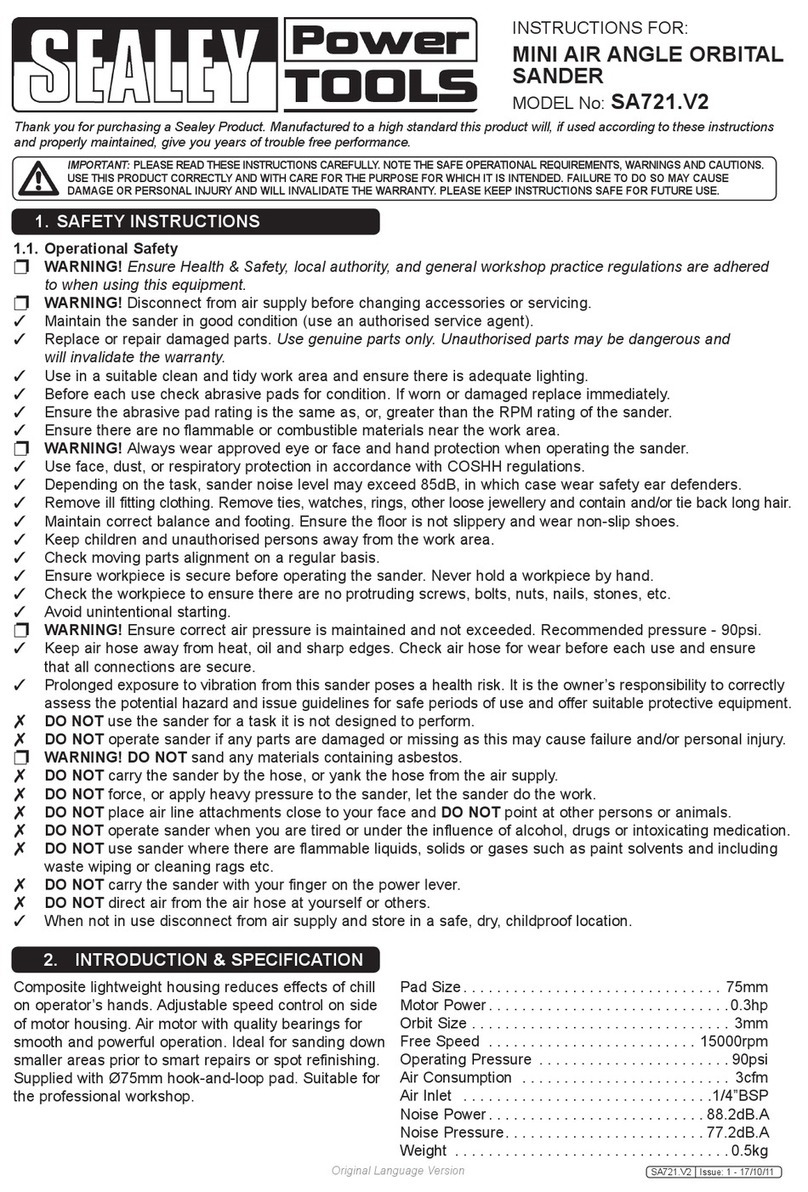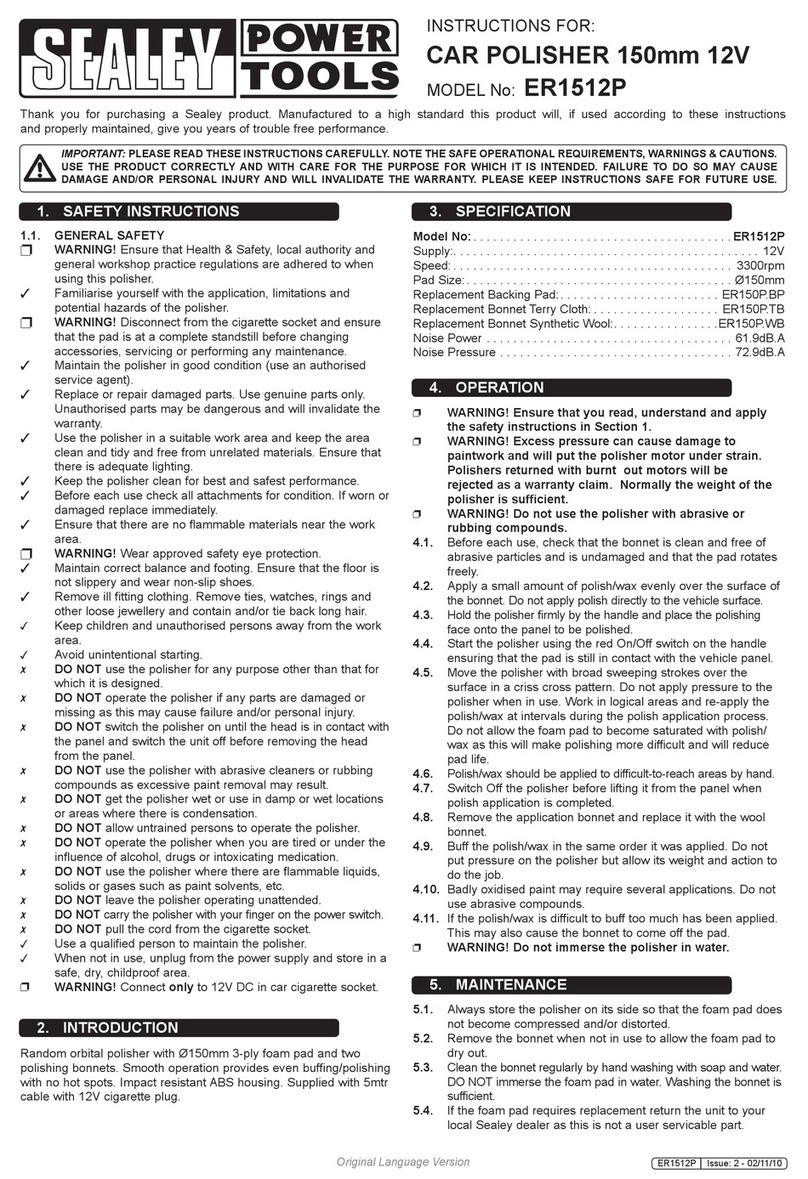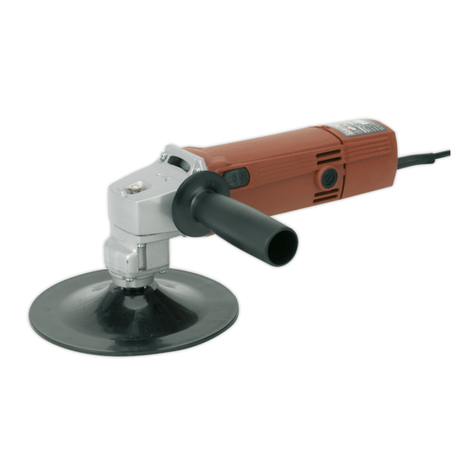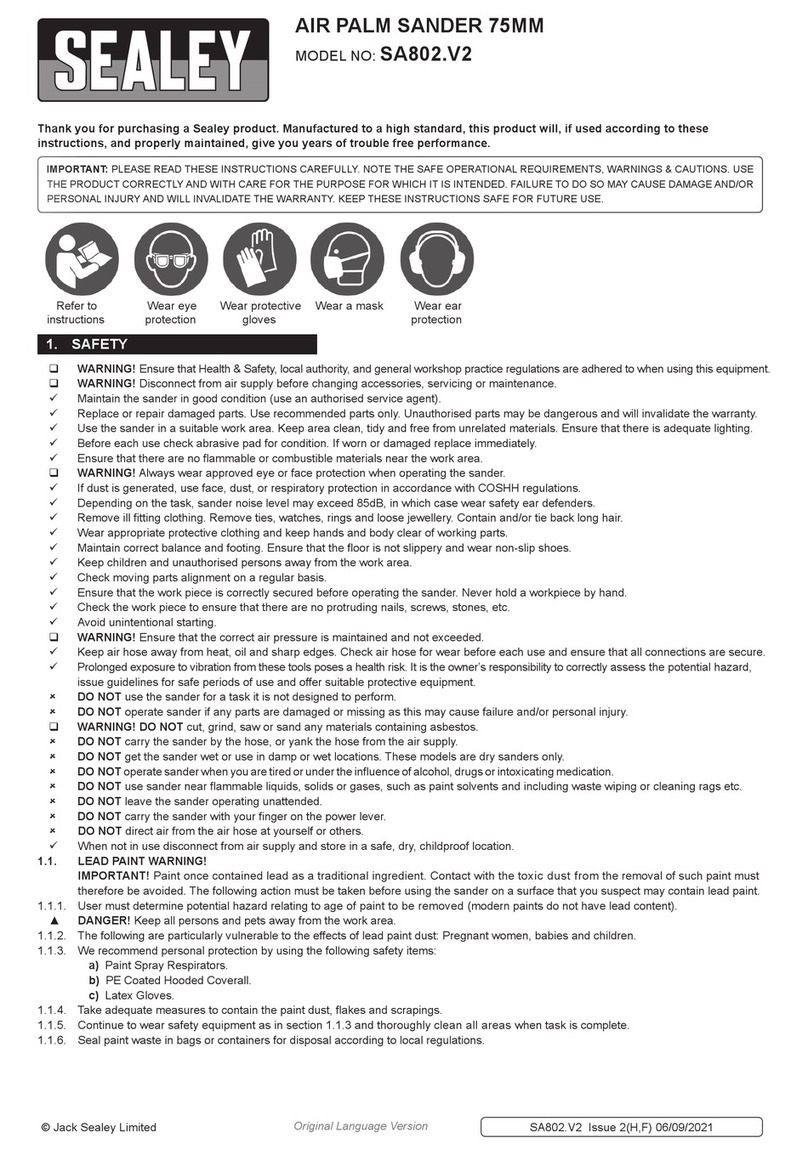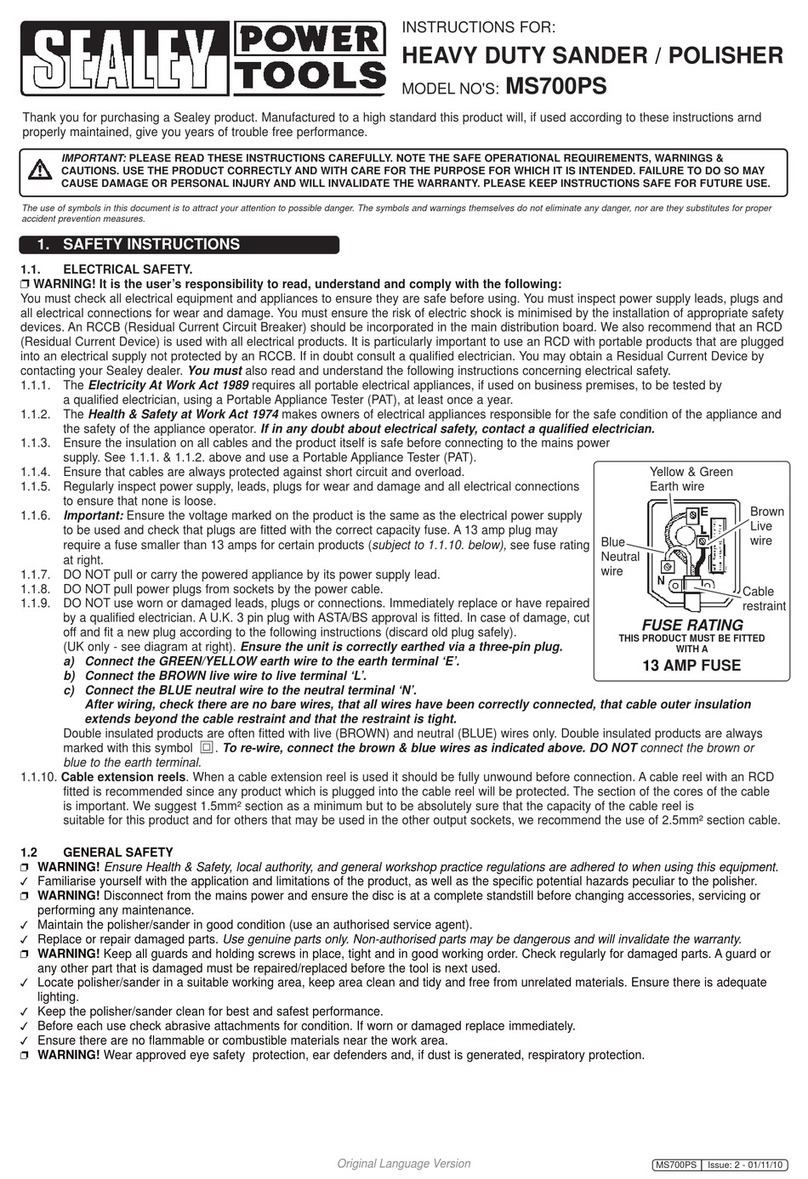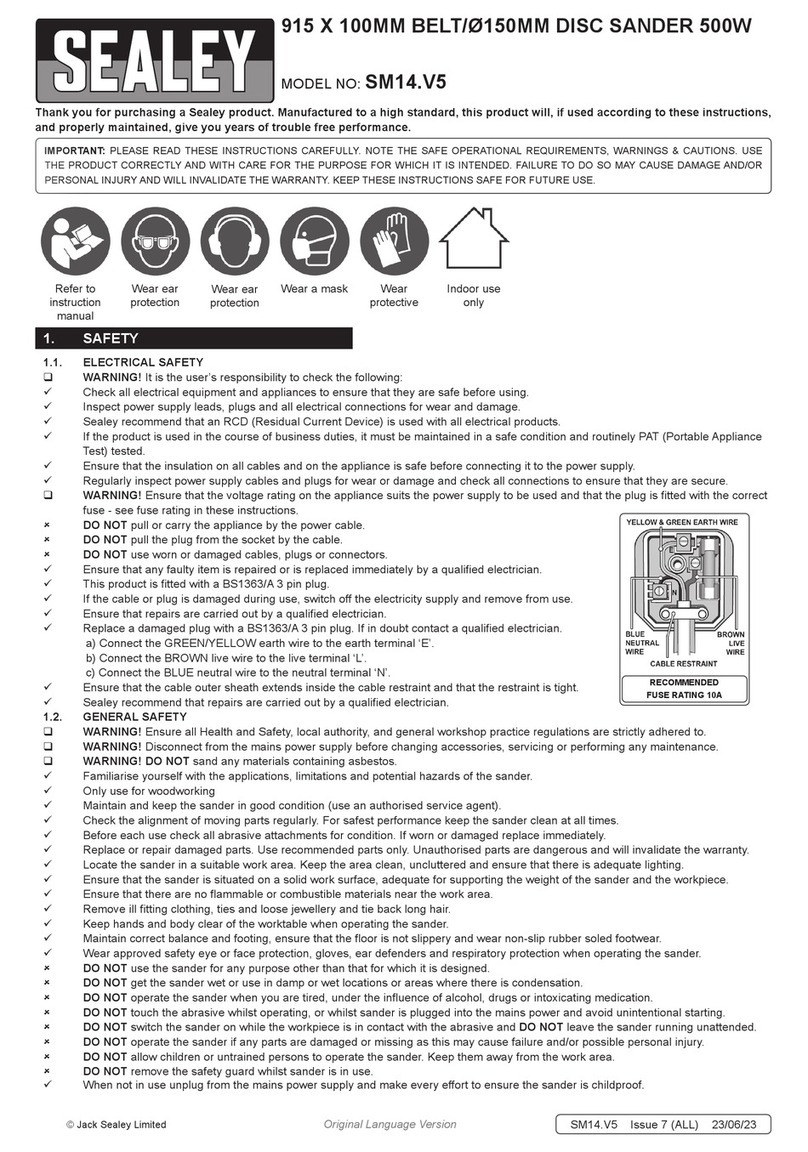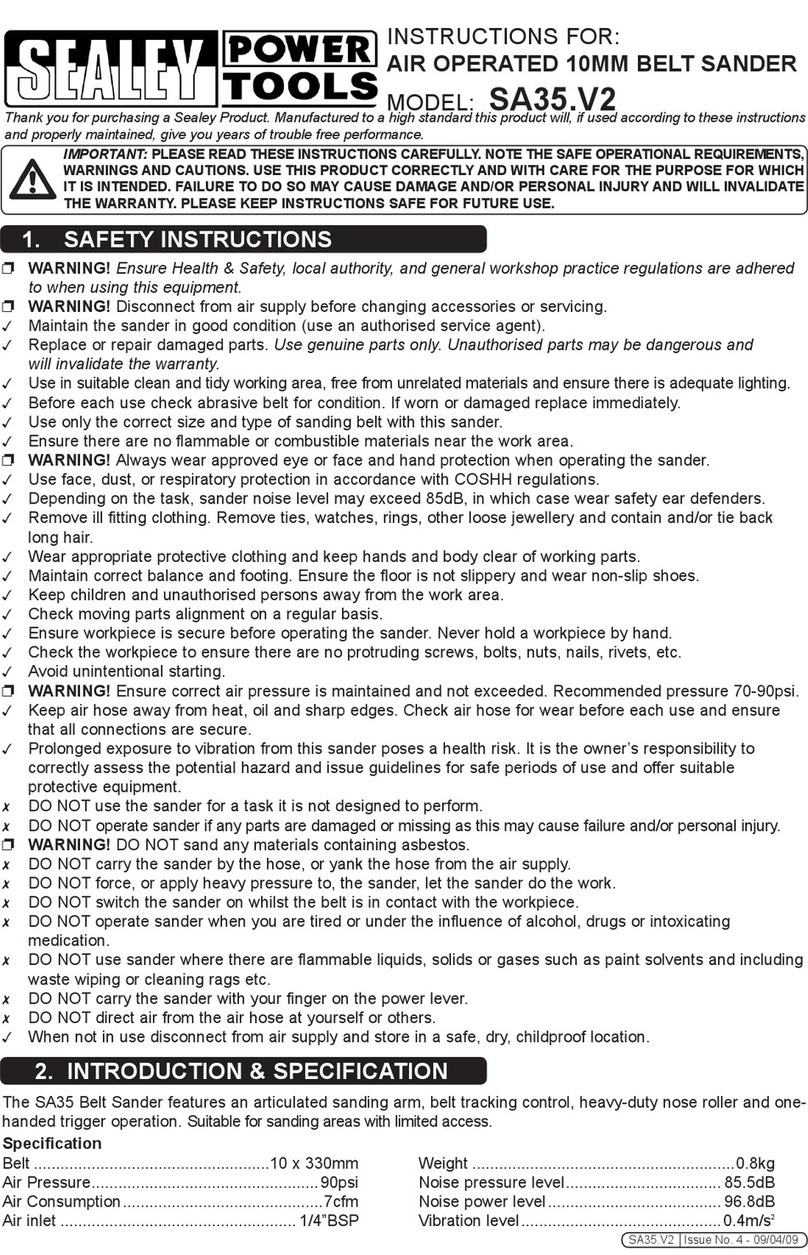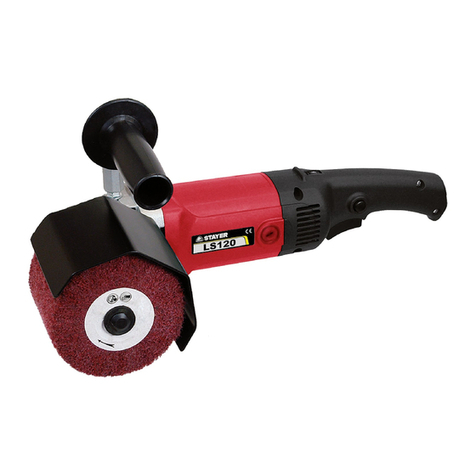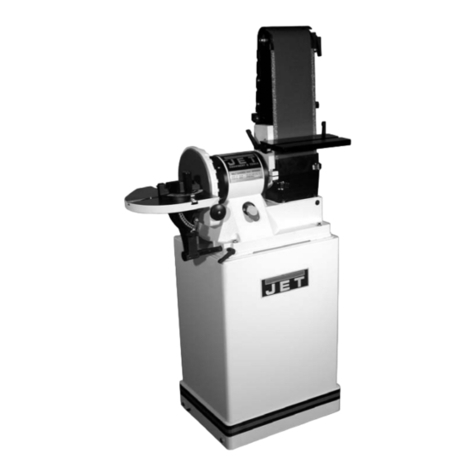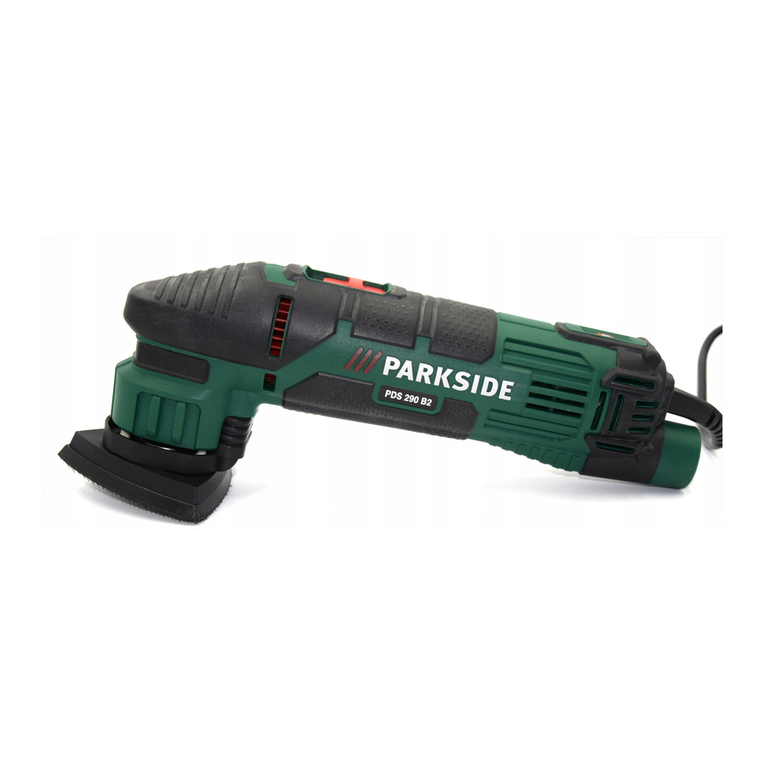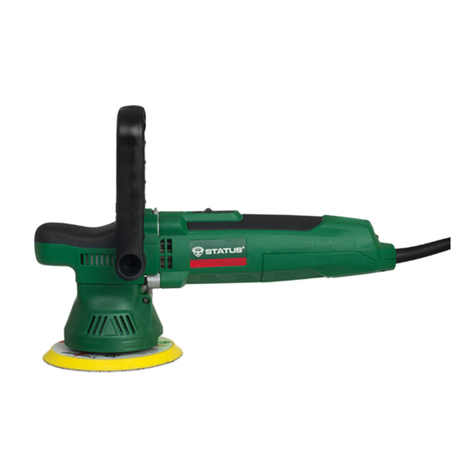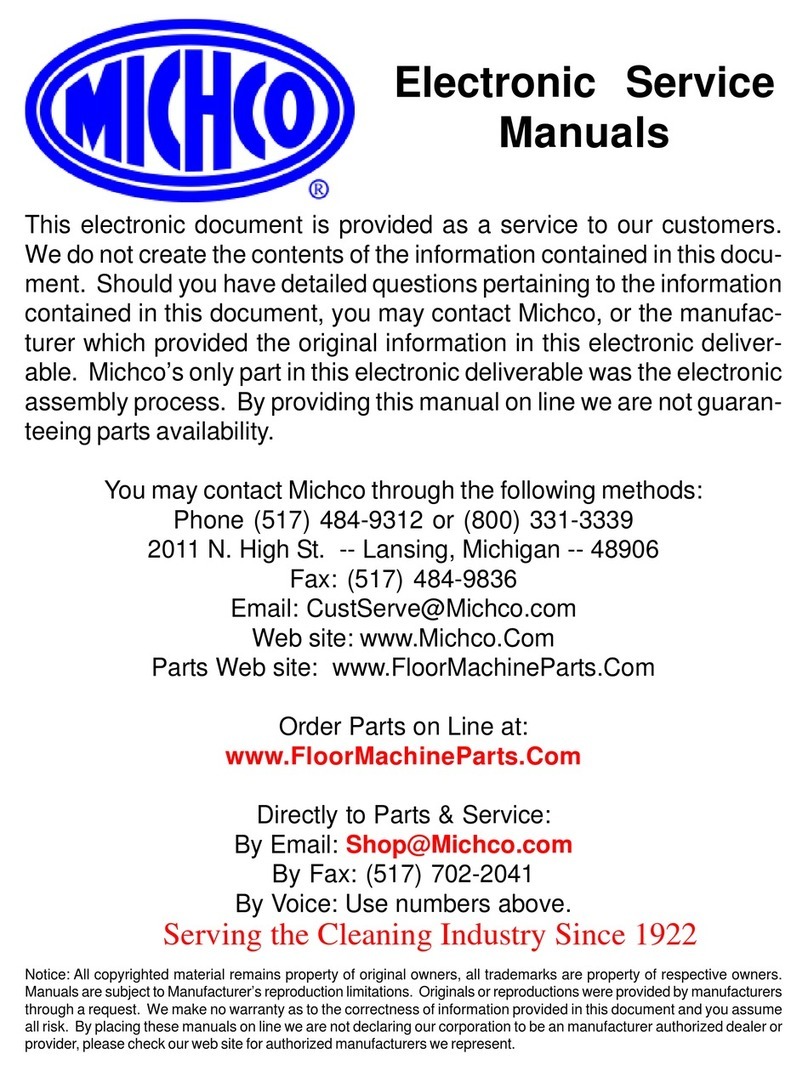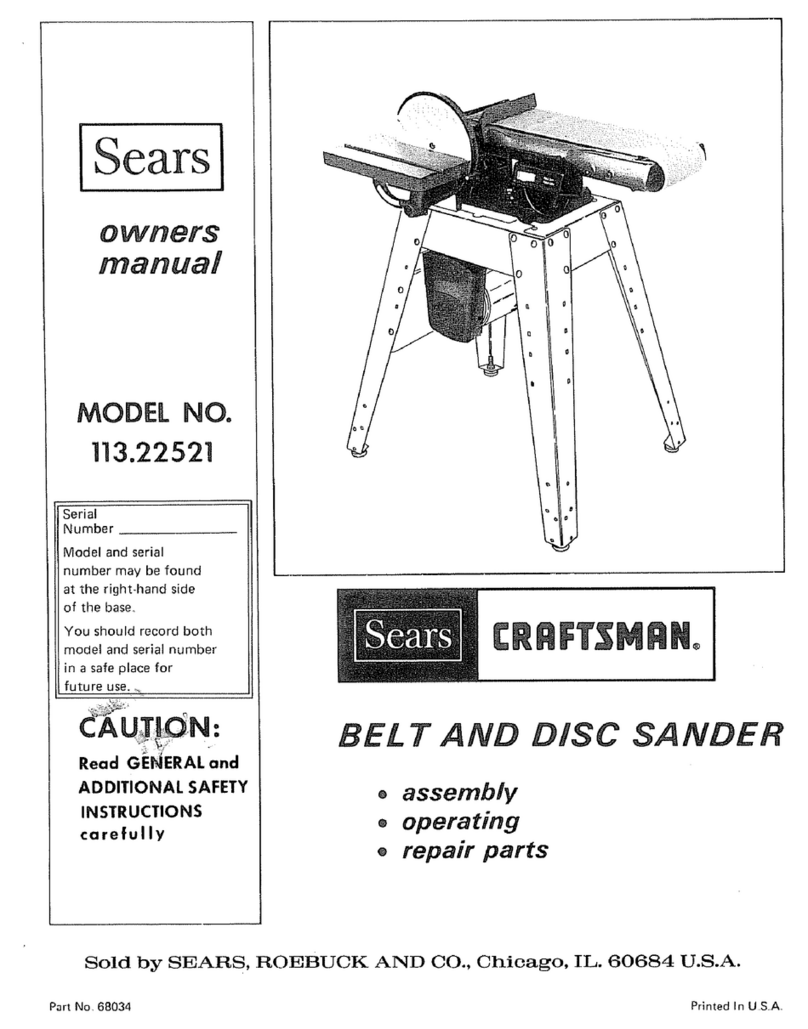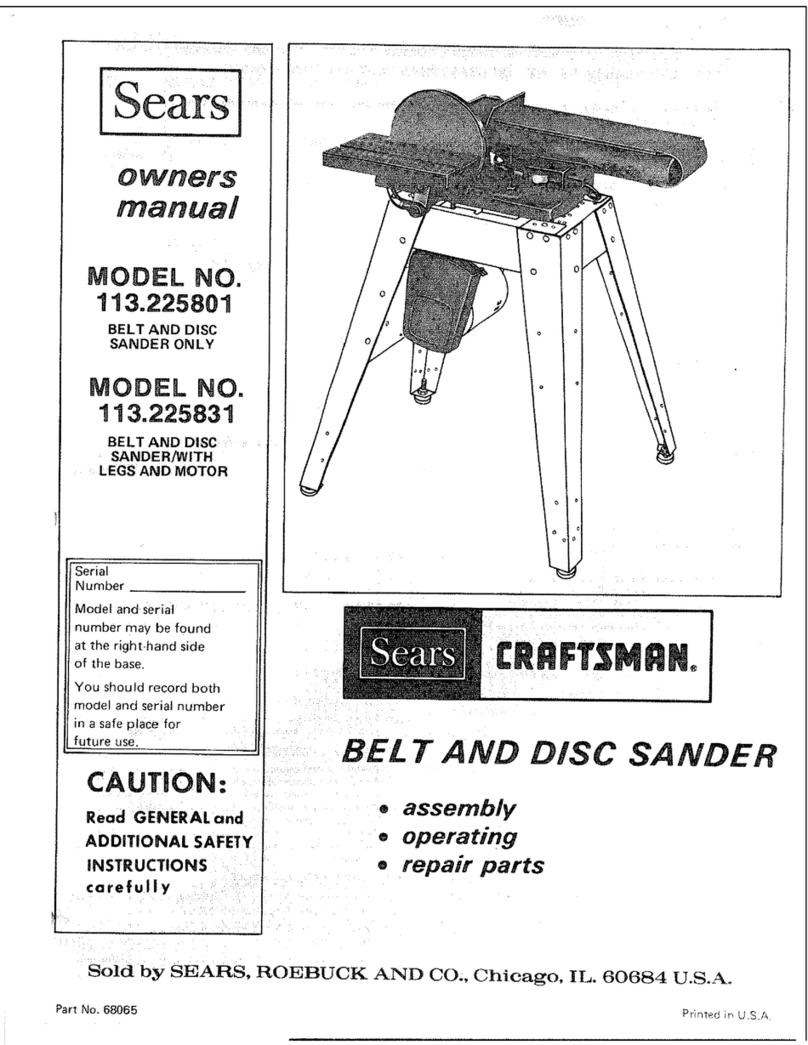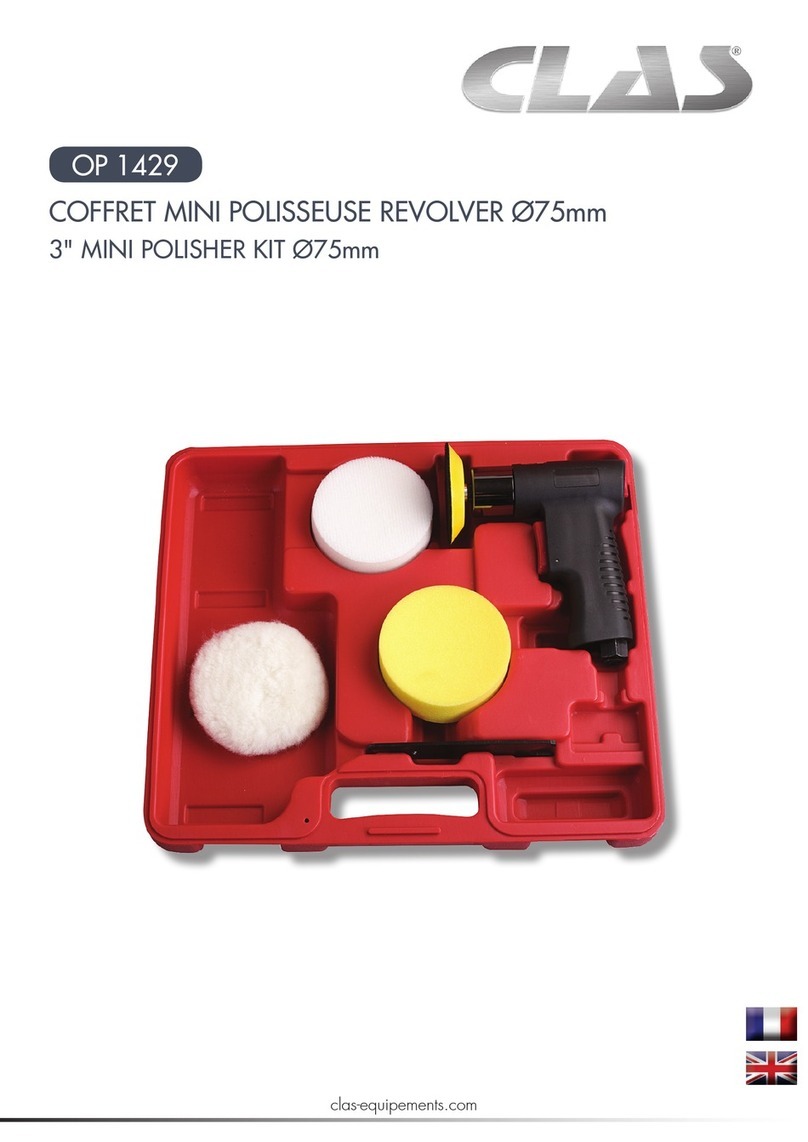
INSTRUCTIONS FOR:
HEAVY DUTY 170MM POLISHER
Model No: ER1700P
1. SAFETY INSTRUCTIONS
Thank you for purchasing a Sealey product. Manufactured to a high standard this product will, if used according to these instructions
and properly maintained, give you years of trouble free performance.
IMPORTANT: PLEASE READ THESE INSTRUCTIONS CAREFULLY. NOTE THE SAFE OPERATIONAL REQUIREMENTS, WARNINGS AND
CAUTIONS. USE THIS PRODUCT CORRECTLY AND WITH CARE FOR THE PURPOSE FOR WHICH IT IS INTENDED. FAILURE TO DO SO
MA
Y CAUSE DAMAGE AND/OR PERSONAL INJURY AND WILL INVALIDATE THE WARRANTY. RETAIN INSTRUCTIONS FOR FUTURE USE.
1.1. ELECTRICAL SAFETY
p
p
WARNING! It is the users responsibility to check the following:
You must check all electrical equipment and appliances to ensure they are safe before using. You must inspect power supply leads,
plugs and all electrical connections for wear and damage. You must ensure the risk of electric shock is minimised by the installation of
appropriate safety devices. An RCCB (Residual Current Circuit Breaker) should be incorporated in the main distribution board.
We recommend that an RCD (Residual Current Device) is used with all electrical products. It is particularly important to use an RCD
with portable products that are plugged into an electrical supply not protected by an RCCB. If in doubt consult a qualified electrician.
You may obtain a Residual Current Device by contacting your Sealey dealer. You must also read and understand the following
instructions concerning electrical safety.
1.1.1. The Electricity At Work Act 1989 requires all portable electrical appliances, if used on business premises, to be tested by a qualified
person, using a Portable Appliance Tester (PAT), at least once a year.
1.1.2. The Health & Safety at Work Act 1974 makes owners of electrical appliances responsible for the safe condition of the appliance and
the safety of the appliance operator. If in any doubt about electrical safety, contact a qualified electrician.
1.1.3. DO ensure that the insulation on all cables and the product itself is safe before connecting to the mains power supply. See 1.1.2.
above and use a Portable Appliance Tester (PAT).
1.1.4. DO ensure that cables are always protected against short circuit and overload.
1.1.5. DO regularly inspect power supply, leads, plugs for wear and damage and all power connections to ensure that none is loose.
1.1.6. DO check that the voltage marked on the product is the same as the electrical power supply to be used, and check that all fused
plugs are fitted with the correct capacity fuse.
1.1.7. DO NOT pull or carry the powered appliance by its power supply lead.
1.1.8. DO NOT pull power plug from socket by the power cable.
1.1.9. DO NOT use worn or damage leads, plugs or connections. Immediately replace or
repair by qualified persons. A U.K. 3 pin plug with ASTA/BS approval
is fitted. In case of damage, cut off and fit a new plug according to the following
instructions (UK only - see diagram).
Ensure the double insulated polisher is correctly wired to a three-pin plug.
a) DO NOT connect to the earth terminal E.
b) Connect the BROWN live wire to live terminal L.
c) Connect the BLUE neutral wire to the neutral terminal N.
1.1.10. If you use the polisher outdoors and you need an extension cable, ensure that it is marked for outdoor use.
1.2. GENERAL SAFETY
3Disconnect the polisher from the mains power before changing accessories, servicing, or performing any maintenance.
3Maintain polisher and discs in good condition. Check moving parts and alignment. If necessary use an authorised service agent.
3Replace or repair damaged parts. Use recommended parts only. Unauthorised parts may be dangerous and will invalidate the warranty.
3Keep the polisher clean for best and safest performance.
3Wear approved safety goggles, ear defenders, appropriate dust mask, if polisher generates dust, and safety gloves.
3Remove ill fitting clothing. Remove ties, watches, rings and other loose jewellery and contain long hair.
3Use polisher in a suitable work area. Keep area clean, tidy and free from unrelated materials and ensure adequate lighting.
3Maintain correct balance and footing. DO NOT over-reach and ensure the floor is not slippery. Wear non-slip shoes.
3Secure unstable workpieces with a clamp, vice or other adequate holding device and ensure the polisher is gripped with both hands.
3Use only approved polishing discs and only use the normal polishing surface.
3Before use, check polishing disc to ensure that it is not damaged. If in doubt do not use the disc.
3Polishing discs must be securely attached before use.
3Keep children and unauthorised persons away from the work area.
7DO NOT operate the polisher if any parts are missing or the polisher is damaged.
7DO NOT use the polisher for a task it is not designed to do and DO NOT use it as a fixed tool.
7DO NOT operate polisher where there are flammable liquids or gases.
7DO NOT get the polisher wet or use in damp or wet locations.
7DO NOT switch the polisher on whilst the disc is in contact with the workpiece.
7DO NOT cover the polisher air vents. To do so will overheat the machine.
pWARNING! DO NOT use this machine to drive circular saw blades or grinding discs.
7DO NOT hold unsecured work in your hand and DO NOT touch the polishing disc whilst operating, or whilst plugged into the mains power.
7DO NOT leave the polisher running unattended and DO NOT lay the polisher down whilst it is running.
7DO NOT operate the polisher when you are tired or under the influence of alcohol, drugs or intoxicating medication.
3When not in use switch off polisher, remove plug from power supply and store in a safe, dry, childproof area.
Blue
Neutral
Wire
Brown Live
Wire
5 AMP
Fuse
ER1700P - 4 - 13/01/06
2. DESCRIPTION
The ER1700P is a low speed tool and as such is not fitted with a safety guard. This machine is suitable for smoothing, applying abrasive paste,
cleaning rusted surfaces, polishing and finishing numerous surfaces with absolute precision. Always use the accessory most suited to the type
of task and surface you are to work on and ensure the accessories are recommended for use with this tool.
Accessories available through your Sealey dealer are: Rubber and nylon backing plates, lambswool pads, resin buffers.
